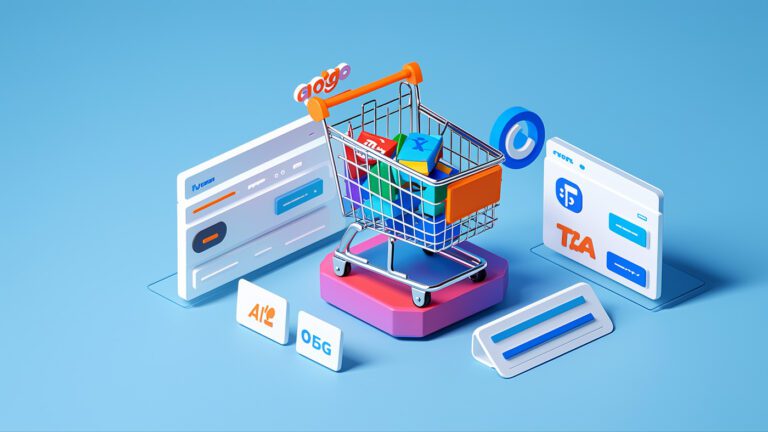Introduction
In the modern e-commerce landscape, data is king. Businesses that can effectively gather and analyze data from Amazon, the world’s largest online retailer, gain a significant competitive advantage. This is where an Amazon scraper API becomes essential. By using an Amazon scraper API, companies can collect vast amounts of data to inform their strategies, optimize their operations, and stay ahead of the competition.
Overview of Amazon Data Sources
Amazon offers a wealth of data that can be invaluable for businesses, including product details, pricing, customer reviews, sales rankings, and more. These data points are crucial for market research, competitor analysis, pricing strategy, and inventory management.
Importance of Amazon Data
The importance of Amazon data cannot be overstated. Obtaining and analyzing this data can bring numerous benefits to businesses:
- Improved Product Listings and Descriptions: By analyzing competitors’ product descriptions and customer reviews, businesses can optimize their own product listings to attract more customers. Accurate and detailed descriptions not only enhance product appeal but also improve search engine rankings, increasing visibility.
- Competitive Pricing Strategies: Pricing is a key factor influencing sales. By monitoring competitors’ prices in real-time, businesses can adjust their pricing strategies to stay competitive. Dynamic pricing strategies can help businesses maximize profits and market share at different times.
- Enhanced Customer Insights: Customer reviews and ratings provide valuable feedback, helping businesses understand customer preferences and needs. These insights can be used to improve product quality, design new product features, and develop effective marketing strategies.
- Better Inventory Management: By analyzing sales data and trends, businesses can predict demand changes, optimize inventory levels, and avoid overstocking or stockouts. This not only reduces costs but also improves customer satisfaction.
- Informed Decision-Making: Comprehensive analysis of various data points enables businesses to make more informed decisions. For example, understanding which products perform best in certain seasons or regions allows for targeted marketing and sales strategies.
However, collecting Amazon data is not without its challenges.
Challenges in Collecting Amazon Data
Technical Barriers
Collecting Amazon data faces many technical barriers, primarily including the following aspects:
- CAPTCHA and Bot Detection: Amazon uses CAPTCHA and other bot detection technologies to prevent automated data collection. These measures effectively block unauthorized access, ensuring data security and privacy.
- IP Blocking: Amazon monitors and restricts frequent requests from the same IP address. Once abnormal activity is detected, the IP address is blocked, preventing data collection. This requires collection tools to have dynamic IP switching and proxy pool technologies to avoid blocking.
- Dynamic Content Loading: Modern web pages often use JavaScript to dynamically load content, making it difficult for traditional HTML parsing techniques to capture complete data. To address this challenge, collection tools need to have the ability to parse JavaScript content or use browser automation technologies like Selenium.
- Frequent Website Structure Changes: Amazon regularly updates its website structure to improve user experience and security. These changes can cause collection scripts to fail, requiring constant maintenance and updating of code to adapt to the new structure.
- Massive Data Volume: Amazon has a vast amount of data involving millions of products and customer reviews. Efficiently processing and storing this data poses high technical and infrastructure requirements, needing strong computing power and distributed processing technologies.
Legal and Ethical Considerations
Collecting data from Amazon also involves navigating legal and ethical concerns. Amazon’s terms of service explicitly prohibit unauthorized data extraction, which can lead to legal consequences if not properly managed.
Solutions for Collecting Amazon Data
Traditional Methods
Traditional collection methods involve manually coding scripts using programming languages like Python and libraries such as Beautiful Soup or Scrapy. While these methods can be effective, they require significant technical expertise and ongoing maintenance to adapt to Amazon’s frequent changes.
Cloud-Based Collection Services
Several cloud-based services offer Amazon data collection solutions. These services handle the technical aspects, such as rotating IP addresses and solving CAPTCHAs, making it easier for businesses to access the data they need.
Common Solutions and Their Drawbacks
- Manual Coding and Scripts
- Pros: Full control over the collection process.
- Cons: High maintenance, requires technical skills, prone to blocking.
- Third-Party Collection Tools
- Pros: Easy to use, no technical expertise needed.
- Cons: Limited customization, higher costs, potential data accuracy issues.
- Proxy Services
- Pros: Helps avoid IP blocks.
- Cons: Additional costs, does not solve CAPTCHAs or handle dynamic content well.
Introducing Pangolin Scrape API
Amidst these challenges, Pangolin Scrape API emerges as a robust solution. This innovative API offers several features that set it apart from other products in the market.
Key Features of Pangolin Scrape API
- Real-Time Data Collection by Postal Code: Unlike many scrapers that collect data from generic locations, Pangolin Scrape API allows users to specify postal codes, enabling highly localized data collection.
- High SP Ad Coverage: The API boasts a 98%+ coverage rate for Sponsored Products (SP) ads, ensuring comprehensive data capture.
- Massive Data Handling: Pangolin Scrape API can process billions of raw Amazon pages each month, demonstrating its scalability.
- Cost-Effective: The API offers competitive pricing, making it accessible for businesses of all sizes.
- Ease of Integration: Designed with user-friendliness in mind, Pangolin Scrape API can be easily integrated into various management and data analysis systems.
Advantages of Pangolin Scrape API Over Traditional Methods
- Reliability: High success rates in data extraction.
- Customization: Tailored solutions to meet specific business needs.
- Scalability: Capable of handling large volumes of data efficiently.
- User-Friendly: Simplifies the integration process with existing systems.
Case Study: Success with Pangolin Scrape API
Consider a mid-sized e-commerce company looking to optimize its pricing strategy. By using Pangolin Scrape API, the company could:
- Gather real-time pricing data from specific regions.
- Analyze competitor pricing strategies.
- Adjust their own prices dynamically to stay competitive.
- Monitor product performance across different locations.
The result was a significant increase in sales and customer satisfaction, demonstrating the tangible benefits of using Pangolin Scrape API.
Conclusion and Future Outlook
Summary of Key Points
The Amazon scraper API is an indispensable tool for businesses looking to leverage Amazon’s vast data resources. Despite the challenges of collecting Amazon data, solutions like Pangolin Scrape API offer effective, scalable, and user-friendly alternatives. With its unique features, Pangolin Scrape API stands out as a leading choice for businesses aiming to gain a competitive edge through data-driven decision-making.
Future Outlook
As e-commerce continues to evolve, the demand for sophisticated data collection solutions will only grow. Future advancements may include more robust anti-detection technologies, enhanced data accuracy, and deeper integration with artificial intelligence and machine learning tools to provide even more valuable insights.
By staying ahead of these trends and continually improving its offerings, Pangolin Scrape API is well-positioned to remain a key player in the data collection landscape, helping businesses unlock the full potential of Amazon’s data.



